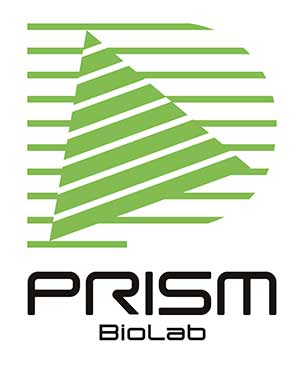Published on: December 14, 2022
How do you think about PPI? It’s of interest by many pharmaceutical companies as well as scientists for long but few drugs have developed so far. PPI field is still a chaos and needs more intensive research. We are trying to establish a confirmed PPI drug discovery & development methodology as a leading company.
Protein-protein interaction (PPI) is physical and associative contacts of two or more proteins, which leads to biological and biochemical events in organisms. Proteins as well as other biomolecules carry out their roles by specific interaction with the counterpart(s). PPI is one format of molecular contact that govern our biophysical functions. In fact, PPI acts as regulatory role in severe diseases (i.e., cancer) and have become a novel focus of drug discovery, especially as a target for diseases with unmet needs.
At first glance, targeting PPI seems very simple because PPI is controlled by biomolecules in our body. It is almost obvious a small molecule can be utilized for PPI modulation. However, proteins which functions by PPI have been undruggable target because PPI is too diverse and complex to rationally inhibit or modulate the molecular contacts even in the presence of X-ray crystallographic structure of proteins.
PPI are classified in a couple of different manners: obligate/non-obligate, transient/permanent, covalent/non-covalent, and so on.1) These classifications basically focus on physical and chemical properties (based on kinetics, thermodynamics) like affinity or stability of protein-protein complex. These classifications are useful for better understanding of PPI as a whole. But actually, these classifications are just model interpretation of interaction of two proteins. In real PPI, there are cased where more than two molecules are associated and one of which might not be a protein but DNA, RNA, or a signaling substance like a hormone or a small peptide.
A number of proteins form homo-oligomers and/or hetero-oligomers. PPI is also classified by molecular identity as well. The function of a protein is often regulated by molecular assembly. In some cases, homodimer is the active form and heterodimers are inactive and vice versa. Inactive homo-oligomers are sometimes play a crucial role as a pool to realize a rapid response to internal or external stimuli. Specific disturbance of homo or hetero assembly is of interest in PPI field. One protein often interacts with a couple of different proteins and the interacting domain is sometimes overlapped. This complexity makes PPI drug discovery challenging, but we still have chances to control PPI by the use of molecules (not only small molecules but also antibodies, nucleic acids, macrocyclic peptides and so on).
Better understanding of PPI in a molecular level is essential for drug discovery and development. Bioinformatics with the aid of AI allowed construction of PPI databases.2) AI-based PPI interface classification and prediction are becoming focused research area. However, individual PPI is, in most cases, still mysterious and needs research to figure out the essence of molecular interaction.
We love to understand what PPI is through the requisite research for drug discovery and development. A paradigm shift in this field would definitely change the game since PPI are also related to other significant in vivo interactions (protein-protein-DNA, protein-protein-RNA, for instance). We don’t intend to focus on PPI: just a starting point for controlling the complex biomolecule interactions and signal transductions.
“PPI” is still undeveloped field of drug discovery. It is mostly caused by the absence of established methodology. We are making tremendous and continuous efforts for establishing reliable and concrete methodology that is hopefully applicable for all PPI.
We are always welcome to discuss what PPI is and how PPI’s perspective is like. Scientific discussion in this field will provide huge insights. If you are interested in PPI, please contact us to have fruitful discussion.

